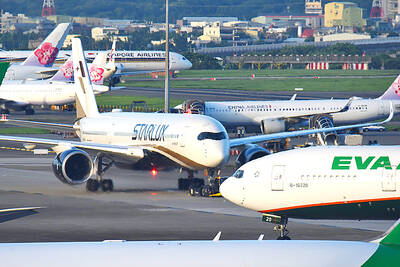From drones and smart cars to remote-controlled door locks and eyewear, the 2014 Consumer Electronics Show promises to showcase the “Internet of Things,” along with gadgets like smartphones and tablets.
The technology extravaganza that plays out each year in Las Vegas has evolved beyond the eye-popping television technology for which it is known, to serve as a stage for once-dumb devices given brains in the form of computer chips and Internet connections.
And smartphones and tablets have become such stars in their own rights, complete with rapid release cycles and exclusive launch events, that the titans in that market tend to leave the CES stage and hordes of press from around the world to gizmos that don’t usually get a spotlight.
“You will see a lot about the Internet of things; all the gadgets that are not a tablet, smartphone or personal computer but are attached to the Internet,” Forrester analyst Frank Gillett said of CES, which officially opens on Tuesday.
“Like your car telling you that you are speeding too much or door locks that you unlock with a smartphone,” he continued. “There are all kinds of gadgety things like that we will see.”
CES organizers are also billing the four-day show as the largest “app event” in the world, complete with hackathons and a mobile applications “showdown.”
“Apps have become an integral part of our everyday lives, from use in phones, computers, tablets and wearable technology,” said Gary Shapiro, president of the Consumer Electronics Association (CEA), which organizes the show.
“The app innovation at CES offers the opportunity for networking, showcasing technology and hackathons focused on this growing tech space,” Shapiro said.
Long a hardware showcase, CES is under pressure to adapt to consumers’ love of digital content and services ecosystems such as the iTunes library tailored for Apple iPhones, iPads, and iPod touch devices, according to Milanesi.
“So you need the health, connected home and other zones to show end-to-end value being delivered through the hardware,” she said.
Apple has made a practice of skipping CES, opting instead to launch products at private events deemed must-attend media affairs. Other major players, such as Samsung and Google, in the smartphone and tablet market have followed suit.
“Last year, CES exhibits went from an Internet fork to connected cars,” Milanesi said. “There is so much, it is easy to get lost in the noise.”
Analysts did expect arrays of smartphones or tablets powered by Google’s freshly-released KitKat version of the Android mobile operating software.
The latest and greatest in television ultra-high definition screens are expected to be on display, but analysts expected them to land in the market with a thud similar to that made by 3D televisions.

Taiwan’s rapidly aging population is fueling a sharp increase in homes occupied solely by elderly people, a trend that is reshaping the nation’s housing market and social fabric, real-estate brokers said yesterday. About 850,000 residences were occupied by elderly people in the first quarter, including 655,000 that housed only one resident, the Ministry of the Interior said. The figures have nearly doubled from a decade earlier, Great Home Realty Co (大家房屋) said, as people aged 65 and older now make up 20.8 percent of the population. “The so-called silver tsunami represents more than just a demographic shift — it could fundamentally redefine the

Businesses across the global semiconductor supply chain are bracing themselves for disruptions from an escalating trade war, after China imposed curbs on rare earth mineral exports and the US responded with additional tariffs and restrictions on software sales to the Asian nation. China’s restrictions, the most targeted move yet to limit supplies of rare earth materials, represent the first major attempt by Beijing to exercise long-arm jurisdiction over foreign companies to target the semiconductor industry, threatening to stall the chips powering the artificial intelligence (AI) boom. They prompted US President Donald Trump on Friday to announce that he would impose an additional

China Airlines Ltd (CAL, 中華航空) said it expects peak season effects in the fourth quarter to continue to boost demand for passenger flights and cargo services, after reporting its second-highest-ever September sales on Monday. The carrier said it posted NT$15.88 billion (US$517 million) in consolidated sales last month, trailing only September last year’s NT$16.01 billion. Last month, CAL generated NT$8.77 billion from its passenger flights and NT$5.37 billion from cargo services, it said. In the first nine months of this year, the carrier posted NT$154.93 billion in cumulative sales, up 2.62 percent from a year earlier, marking the second-highest level for the January-September

Asian e-commerce giant Shein’s (希音) decision to set up shop in a historic Parisian department store has ruffled feathers in the fashion capital. Anger has been boiling since Shein announced last week that it would open its first permanent physical store next month at BHV Marais, an iconic building that has stood across from Paris City Hall since 1856. The move prompted some French brands to announce they would leave BHV Marais, but the department store had already been losing tenants over late payments. Aime cosmetics line cofounder Mathilde Lacombe, whose brand was among those that decided to leave following